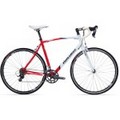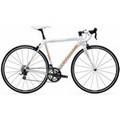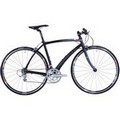No matter how much thought you put into your routing and schedule, weather will always prove a nuisance at some point during your bike tour. You could find yourself soaked through with rain while you’re pedaling through Death Valley or you could find yourself sweating to death in a Fargo heat wave.
Wind is a weather condition that could become a problem virtually anywhere at any time of year. Unlike snow or heat, you probably won’t be able to plan your tour around the wind to avoid it.
Sometimes wind can be dangerous for cyclists. If you can’t take a day off from your schedule, it’s important that you know how to handle it.
Weathering the Wind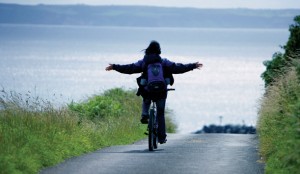
If you have to fight against headwinds, there are a few things you can do to make it less difficult.
First and foremost, it’s a great idea to try planning for wind while you’re training. If you’re training on a stationary bike, make sure you set your resistance higher than normal every now and then to mimic the feeling of wind.
If you’re training outdoors, head out on a windy days and alter your route so that you’re pedaling directly against it. That way, you’ll be better prepared for it on tour.
Once you’re out on tour, here’s what you can do to minimize how much the wind will affect you.
Minimize your saddlebags
The less horizontal resistance you create against the wind, the easier it will be to cut through it.
Your bike is relatively thin to begin with, but your saddlebag and side panniers might create more resistance than you realize.
On a windy day, try emptying out any side compartments and securing them so that they are as flat as possible. You might also be able to secure them up towards the middle even when they are full.
You can also minimize your width while you ride by:
- Keeping your elbows in
- Taking anything out of the side pockets on your backpack
- Stacking items only in the middle of your trailer
Hunch down
Similarly, you should try keeping your chest close to the handlebars to minimize resistance. You’ll probably do this instinctively.
When you’re hunched over, just make sure you don’t completely abandon what you know about proper form. You could strain the muscles in your back if you hunch over too far while also pushing extra hard on the pedals. 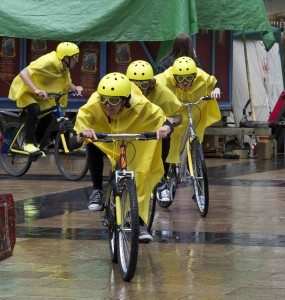
Don’t push too hard
On that note, you shouldn’t completely drain yourself of energy and power during heavy gusts of wind.
Surely you’ll need to pedal more aggressively to keep moving against the headwind, but first switch to a lower gear as if you were going uphill.
By pushing hard against the wind you’ll be worn out in no time. You’ll also be using more strength than you’re used to, which could make you too sore to stay on schedule the next day.
Go early
In most areas, the wind tends to pick up in the afternoon. You should be checking the forecast every day on your bike tour, so take note of wind conditions for each upcoming day.
If there will be a lot of wind the following day, get an early start so that you can clock your hours before the wind makes riding difficult.
…Or late
On the other hand, if you know you’re going to be dealing with harsh winds later in the day and you need to make it to a certain place to stay on schedule, it’s a good idea to hit the wind when you’re fresh out of camp.
For example, if the forecast predicts winds will be heaviest at 1:00pm, consider leaving at that time so that you’re strongest part of the day is the most difficult.
Then, as the wind subsides in the evening you’ll be worn out but the ride will be easier.
Alter your route
If you’re struggling with unexpected headwinds, take a look at the map and see if there are any roads that would allow you to travel in a similar direction in the crosswinds.
Since the route won’t be straight it will take you longer, but if the winds are strong enough the time might be just about the same.
If you do find yourself on a different route facing crosswinds, be very careful not to be blown into traffic. While easier to pedal in, crosswinds are more dangerous than headwinds.
Don’t be a sail 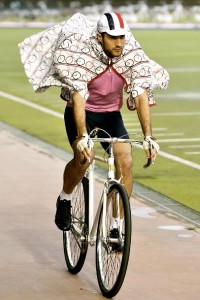
If you feel your jacket flapping in the headwinds, you are essentially a sailboat. The wind will push you back even harder if it catches your clothing and pushes it in the opposite direction.
Either cinch your loose clothing tight to your body or take off baggy layers. That way, you will cut through the wind more easily.
By doing these six simple things on the road, you can make headwinds less of a problem on tour.
Of course, if you ever feel unsafe on the road, it’s always a good idea to wait it out. It’s better to be late to your destination than to never get there at all.
